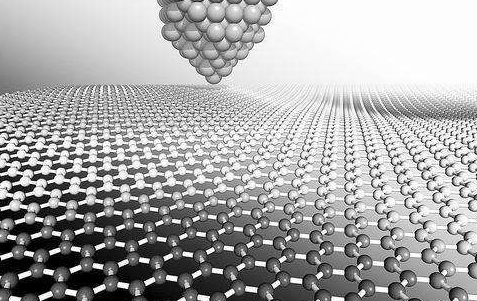How to Discharge a Lipo Battery for Disposal
Sep 25, 2019 Pageview:3080
It is for certain that one of your LiPo batteries will reach the end of its life and stop working. It could be as a result of recycling it too often or it bloats and becomes unsafe to use, in the end, you will always be left with a LiPo battery that is no longer advisable or safe to use. It doesn’t matter how it happened, even with proper care while charging, it is unlikely that your LiPo battery will last more than a year or two if you use it constantly or not.
If it is determined that a battery is no longer useable, you know it is time to discharge the battery and then dispose of it safely. This article describes different methods through which you can safely discharge your LiPo battery and the several disposal options as well. We recommend that you get acquainted your local laws and regulations before you go ahead with the disposal of your battery (be it a LiPo, Li-ion or whatever battery for that matter).
How do you dispose of a bloated LiPo battery·
Unlike the NiCd batteries, the LiPo batteries are quite environmentally friendly. Because of the issues of safety, it is best to fully discharge your LiPo cells before you go on to dispose of them. But then, if a cell or pack is physically damaged, you may not have to discharge the LiPo cell before you go on to dispose or discard them. you must also ensure you cool off the batteries before disposal.
To dispose of your LiPo cell or batteries, you may follow the guidelines
1.DO NOT discharge the battery if the LiPo cell in the seal or pack has been damaged physically and therefore results in swelling, a tear or a split in the cells foil covering. In this case, you may jump to step 5.
2.Put your discharged LiPo battery in a fireproof container or a bucket of sand.
3.Connect your LiPo battery to your discharger. Then set the discharge interruption or cutoff voltage to the lowest value possible. The discharge current should be set to a value of C/10, where "C" is the rated capacity of the pack. For instance, the value "1C" for a battery of 1200 mAh is 1.2 A and the current value C / 10 of the battery is (1.2 A / 10) 0.12 A or 120 mA. On the other hand, it is possible to use a type of simple resistive discharge load, e.g. a power resistor or a set of bulbs provided the discharge current does not exceed the C / 10 value which can bring about the issue of overheating in the battery. For 7.4V and 11.1V rated LiPo packs, you may connect a 2W and 150W nominal resistor to the battery’s negative and positive terminals in other to safely discharge the battery. You can also discharge the battery through the connection of an ESC / motor system and then allowing the running of the motor indefinitely until there is no more power available for the system to function.
4.Discharge the LiPo battery until the voltage gets to the 1.0 V per cell, or less. Discharge the battery for as much as 48 hours for resistive load types.
5.Immerse the battery in a bucket of saltwater. The container you use must have a lid but doesn’t need to be airtight. Then you must prepare a bucket or a tub of about 3 to 5 gallons of water and mix about a half cup of salt for every gallon of water. Put the battery in the saltwater and leave it in there for about, 2 weeks.
6.Remove your LiPo battery at this point from the saltwater and you may dispose of it properly in the normal trash can.
How do you discharge a LiPo battery safely·
There are several ways you can discharge your LiPo battery, here are two of them.
a)Use the battery charger as the discharger
Most of the battery chargers currently on the market are built with the discharge feature which allows you to securely discharge your LiPo battery. To do that, you just have to switch your charger settings from "Charge" or from "Balance charge" to the "Discharge" option. Then set it to a low current of around 0.5 A-1A and you are done. It's a quick way to properly discharge your LiPo batteries once they reach the end of their lifespan.
However, there are some things you must keep in mind. Most battery chargers do not completely discharge the battery, this is because the discharge cycle normally discharges the battery to the minimum voltage. The reason for this feature in the battery charger is to bring the battery to a minimum safety voltage before any damage occurs, so as not to completely damage or disable the battery. If you want to dispose of your battery, it is the disabling of the battery is what you want.
Because of this, it is recommended to use the next alternative method described below if you want to completely discharge your battery to the "empty" state.
b)Using a halogen incandescent lamp as the LiPo battery discharger
Getting a light bulb discharger is an excellent tool to use or get into your workshop or on your workbench. It can be built cheaply and it allows you to properly discharge your LiPo battery almost anywhere. It operates with a very simple theory: lightbulbs slowly drain batteries to a safe voltage. If your battery has been drained, so much that a lightbulb can no longer be powered by it, that shows it has reached a state where you can safely dispose of it.
It's easy to build one. There are few things you need, and they include the following: an XT60 male connector, then two wires (you may use the same gauge as that of your battery). You also need a halogen bulb; heat shrinks as well as solder.
NB: If you want to discharge your LiPo battery, ensure you do it outside of your home and do not stay close to flammable material. You may also use a vented ammo box or a battery bunker of a concrete cinderblock for safety.
Charge and discharge tips of LiPo battery
Lithium polymer batteries represent a breakthrough in battery technology for use with several home appliance, and tools. However, due to the chemistry of lithium batteries, there is a risk of fire if the charging process doesn’t go on as designed. This is inevitable because of the very nature of lithium. This is quite the same with all the things we use in our everyday life, including the: kitchen cleaners, knives, cars, and the lot of them, which on their own are dangerous, but can be used safely if simple rules and precautions are followed. Find some of these precautions below;
· NEVER leave the batteries unattended while you’re charging it
· Make sure the setting of the Lithium Polymer Charger for the battery being charged is correct. Ensure this is correct for both current and voltage.
· The lithium-polymer should be CHARGED and STORED in fire-safe containers like LiPo sacks.
· Do not charge your batteries close to flammable objects or liquids.
· Ensure you have a dry fire extinguisher near you. If that is not possible, do have a dry bucket of sand. It is a cheap and effective extinguisher.
· Do not charge in a car even if it is parked.
· Always ensure to keep batteries away from children and pets.
Pay attention to the polarity when connecting the batteries to a charger or ESC.
- Prev Article: Lithium-Ion Battery Maximum Charge Current
- Next Article: Over discharge of lithium ion battery
Leave Message
Hottest Categories
-
Hottest Industry News
-
Latest Industry News











